B.C.'s proposed pay transparency legislation lacks real power to create pay equity, advocates say
Tue, March 7, 2023

B.C. Human Rights Commissioner Kasari Govender notes the gender pay gap in the province stood at 17 per cent in 2022, one of the highest in Canada. (Monkey Business Images/Shutterstock - image credit)
The British Columbia government tabled a bill on pay transparency Tuesday which advocates say lacks power to make a difference for women in the workplace.
According to the province, the legislation is the first phase toward pay equity, and once passed will require employers to include wage or salary ranges on all publicly advertised jobs, and forbid employers to ask job seekers about their pay history or punish employees who disclose their pay to co-workers or job applicants.
B.C. employers will also gradually be required to publicly post reports on their gender pay gap once the legislation passes.
But while greater transparency is welcome, it will not make a significant difference on pay equity in the province, says B.C.'s human rights commissioner.
The regulation covers the B.C. Public Service Agency and Crown corporations with more than 1,000 workers — such as ICBC, B.C. Hydro, WorkSafeBC, B.C. Housing and the B.C. Lottery Corporation — by Nov. 1 this year.
The rest of employers with more than 1,000 workers will be included by the same time next year, followed by employers with more than 300 employees on Nov. 1, 2025, and employers with a staff of 50 or more in November 2026.
By June 1 of each year, B.C.'s Ministry of Finance will publish an annual report on gender pay in the province.
Kelli Paddon, B.C.'s parliamentary secretary for gender equity, said the province is committed to introducing pay equity legislation.
"Today is about drawing a line in the sand," Paddon said Tuesday. "Pay discrimination will not be tolerated in British Columbia."
B.C. still 'decades behind other provinces'
In a statement, B.C. Human Rights Commissioner Kasari Govender notes that the gender pay gap in the province stood at 17 per cent in 2022, one of the highest in Canada, with women and gender-diverse people in B.C. earning less than cisgender men for comparable work.
The gap is larger for people with disabilities, Indigenous people, and people of colour.
"Pay transparency legislation by itself can provide us with more information about the problem — if it is robust enough — but if it doesn't lay the foundation for complementary pay equity legislation, we will not have the policy tools necessary to correct it," said Govender.
She adds the legislation lacks tools for enforcement such as fines or other penalties. She also cites the absence of a centralized database to assess pay gaps or changes over time.
"I am concerned that this legislation will be seen as a solution to the gender pay gap, when in reality B.C. is still decades behind other provinces," she said.
B.C. is one of four provinces, along with Alberta, Saskatchewan and Newfoundland, that does not have pay transparency or pay equity legislation.
Last week, dozens of B.C. organizations, advocates and academics wrote an open letter to Premier David Eby and key cabinet ministers, calling on them to bring in a pay equity act "that enshrines in law the responsibility of all employers to identify and close gaps in pay for work of equal value."
Humera Jabir, a staff lawyer with signatory West Coast LEAF, said legislated pay transparency leaves the burden on individual employees to advocate for equal pay.
"The difference is accountability," Jabir said on CBC's On the Island.
"Transparency would require employers to report on what the systemic differences are in their organizations with respect to pay. Pay equity legislation includes accountability mechanisms, having to actually shift things, not just report on them."
BC’s Negotiations with Government Lawyers Collapse
Tue, March 7, 2023
Lawyers working for the B.C. government say they’re willing to strike to win the right to form their own union after negotiations with the province broke down last week.
BC Government Lawyers Association president Gareth Morley said two weeks of private talks couldn’t end the impasse between lawyers, who want to form their own union, and the government, which wants most of the association’s members to join an existing union.
The association’s 350 lawyers, who advise government on new laws and represent it in civil court, had already voted overwhelmingly in favour of job action last month.
That happened after the B.C. government introduced Bill 5, which Morley says would interfere with the association’s ongoing application to the BC Labour Relations Board to become recognized as a union.
Morley says he’s now consulting with members on job action, which the B.C. government has previously argued would be illegal as the lawyers are not yet unionized.
“We want to talk to the government, but we’re not going to agree to a bill that takes away the ability of our members to decide what union they want to apply to, or if they want to apply at all,” Morley said.
The BC Public Service Agency, charged with dealing with employees, said only that it is considering its next steps.
Morley’s association has long sought union status for its members, who have been excluded from joining a union under B.C. law. They applied to the Labour Relations Board for union status in November.
The B.C. government has not denied the workers have a right to organize but has argued it would be more appropriate for them to join the Professional Employees Association, which represents other certified government workers like agrologists and some staff lawyers for Legal Aid BC.
Last month government introduced legislation that granted most of the association’s lawyers the right to unionize, but steered them to the Professional Employees Association. Those lawyers never applied to the association, nor has that union sought to organize them.
The BC Federation of Labour said the government was interfering with the independent labour process.
BC Federation of Labour president Sussanne Skidmore and secretary-treasurer Hermender Kailley said the legislation would effectively “circumvent” the lawyers’ application to the Labour Relations Board, an independent body that certifies trade unions in B.C.
“The BC Federation of Labour is disappointed that government has chosen this path instead of letting the Labour Relations Board complete its work. It is important to protect the rights of working people to join or form a union of their choosing,” the two said in a prepared statement at that time.
The government has previously argued that Bill 5 wouldn’t interfere with the Labour Relations Board process. Finance Minister Katrine Conroy said the bill clears the way for the lawyers to join a union under existing law.
But Morley says his members have unique needs and should be able to bargain in their own union, like Crown prosecutors, who have had their own union for more than 20 years.
Last month, the association and the government agreed to a media blackout while they negotiated changes to the legislation. The government agreed to pause progress on Bill 5 and the association did the same with its certification application.
Morley said the association has now abandoned the negotiations and restarted its efforts to be certified.
He said he agreed to not discuss the negotiations, but the association wouldn’t return to talks with the government if it passed the bill.
The association does not have union standing, meaning any job action would likely be illegal. But Morley argues they could assert a right to strike for recognition of their union because they haven’t been given a fair chance to choose their own union.
The Professional Employees Association has previously said it supports the lawyers’ association application to form its own union.
Zak Vescera, Local Journalism Initiative Reporter, The Tyee
RIGHT WING CITY HALL
Vancouver’s Decision to Abandon Living Wage Program Creates Shockwaves
Tue, March 7, 2023
In 2017, the City of Vancouver committed to ensuring its employees — and workers for city contractors — were paid enough to live there.
At the time, Vancouver was the biggest employer in the country to offer a living wage based on the cost of rent, food and other necessities.
“It was the largest living wage municipality, and it did a tremendous job over the years in encouraging other businesses to sign on,” said Anastasia French, the director of Living Wage for Families BC. Then-mayor Gregor Robertson told media it was a way to guarantee workers “a basic level of opportunity” in an expensive place to live and work.
On Jan. 31, Vancouver city council voted in a closed meeting to cancel the policy, which covered both city employees and workers for contractors.
Vancouver Mayor Ken Sim pointed out in a prepared statement that the living wage defined by Living Wage for Families BC rose 17.6 per cent this year, a product of rising rents and food costs. Sim said the city would instead transition to paying workers a minimum salary based on a five-year average of the living wage, which changes year-to-year.
But unions and some city councillors say the change denies some workers a needed pay boost.
“They are telling the people who help keep Vancouver running that their labour may be welcome, but they and their families are not,” said the BC Federation of Labour in a statement.
Other activists worry the city’s withdrawal from a program it once championed will hurt support for living wage programs.
“I’m concerned it’s going to reverberate across the province,” said CUPE 15 president Warren Williams, whose union represents thousands of city staff.
The living wage is calculated as the amount of money two income-earners would need to support a family of four in a given municipality. Employers certified by Living Wage for Families BC agree to increase their base rate of pay in line with that wage, which factors in the cost of rent, child care, food and other basics.
This year, the Canadian Centre for Policy Alternatives said the living wage in Vancouver rose from $20.52 to $24.08 an hour, due largely to rising food costs. The centre also changed how it calculated rental cost to reflect the disparity between new renters and long-time tenants who benefit from rental protections.
On Feb. 27 CBC News reported Vancouver was considering ending the living wage.
In fact, the decision to axe the policy had been made a month earlier. Coun. Pete Fry said the vote happened at a Jan. 31 meeting held in camera, meaning councillors couldn’t disclose what happened or how their peers voted.
“It definitely had a bearing on the budget decision we just made,” Fry said. Last week city council — which is controlled by Sim’s ABC party — voted to pass a budget including a 10.7-per-cent property tax hike and a big boost to police funding.
Sim said most city employees were already paid more than the 2023 living wage. He also said that paying workers a wage based on the five-year average was “more practical” and would “smooth out annual fluctuations for workers and contract employees.”
French said the organization does allow certified employers to pay less than the living wage if they provide other benefits to make up for it. But it doesn’t let them pay an average based on costs in previous years.
“You can’t negotiate your rent based on what it was five years ago,” French said.
The city also said paying a minimum wage that fluctuates every year was difficult given its obligations under collective agreements. But Williams, the union leader, doesn’t buy that. He says the change is most likely to affect contractors like tow truck drivers, security guards and cleaners.
“One of the big concerns I have is that this opens the door for contractors to low ball,” Williams said.
Fry and fellow Coun. Christine Boyle confirmed they both voted against the motion.
“The living wage is an important indicator of what it actually costs to live in Vancouver,” Boyle said. “People who work for the City of Vancouver should be able to afford to live here. That’s a pretty basic expectation.”
The Tyee reached out to Sim’s office for additional comment, including what sticking with the living wage program might have cost, but did not hear back by publication time.
The living wage project was created as a way to bridge the gap between the legislated minimum wage and what it actually costs to live in a city like Vancouver. Today, French’s organization boasts more than 250 certified living wage employers. In 2017, the B.C. government even tasked a commission with investigating the transition from a minimum to a living wage, though its most recent report has yet to be completed.
But French said Vancouver’s withdrawal is a blow for the program. The city was the largest municipality to guarantee a living wage.
Other participating cities have made no sign of leaving the program. The City of Victoria recently recertified as a living wage employer this year. The City of New Westminster confirmed in a statement it had no plans to leave the program. City of North Vancouver Mayor Linda Buchanan said in a prepared statement that paying the living wage was more important than ever given the rising cost of living in the region.
“Local governments have a responsibility to ensure that those who we do business with are paying their employees a wage that will allow them to live in the community where they work,” Buchanan wrote. “As mayor, I am committed to upholding our Living Wage Employer certification, full stop.”
But French fears Vancouver’s withdrawal would have a “chilling effect” that could push employers to either abandon the program or reconsider joining.
“We are nervous about that,” she said.
Vancouver and District Labour Council president Stephen von Sychowski slammed the city’s decision, particularly the fact it happened in a closed meeting. He noted the city staff who are affected by the policy change were already on the lowest end of its pay spectrum.
“Decertifying as a living wage employer saves a small amount of money on the backs of people who need it the most,” von Sychowski said.
French acknowledged some employers may be struggling to keep paying the living wage given the increase this year. But many small businesses participating in the program say they are making it work. Patricia Massy, the owner of Massy Books in Chinatown, says offering a living wage is a matter of pride for her business in one of the most expensive cities in North America. She added that it has helped her retain employees at a time the labour market is tight.
“I’m not trying to shame anybody for not being a living wage employer, but I’m certainly not going to hold back from shaming the city,” Massy said.
“Those are essential services, and it just seems so wrong to cut the wages of the people at the lowest end of the pay grade when they’re already getting paid the least.”
Zak Vescera, Local Journalism Initiative Reporter, The Tyee
Cree/Dene woman prepares to clerk for Supreme Court's 1st Indigenous justice
Wed, March 8, 2023
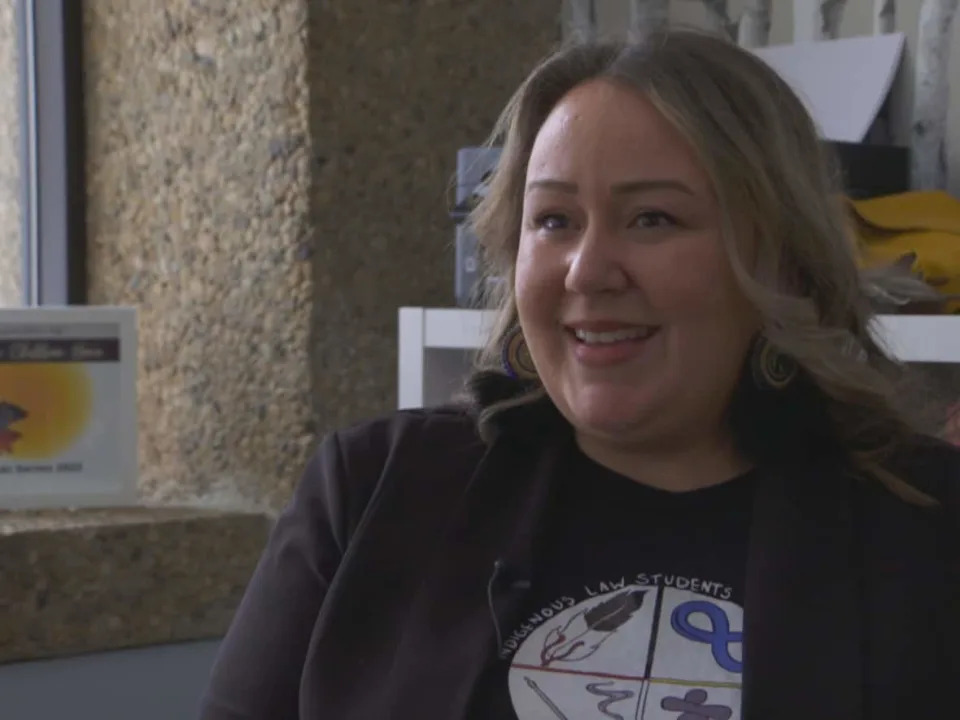
Casey Caines will clerk for the first Indigenous Supreme Court Justice in Canada, Michelle O'Bonsawin, beginning in August 2024. (Ty Ferguson/CBC - image credit)
Casey Caines wasn't sure when to expect the call telling her whether she'd be heading to the Supreme Court of Canada to work as a law clerk.
So when the call from Ottawa came during a community workshop, the Cree and Dene law student from Fort Nelson First Nation in B.C. initially thought it was spam. When she finally decided to answer, she heard the voice of first Indigenous Supreme Court justice on the line.
Justice Michelle O'Bonsawin was calling to let her know that she had been one of three people chosen to clerk for her next year.
When she hung up, Caines told the team around her — and they erupted.
"They were jumping up and down and crying and laughing," she said.
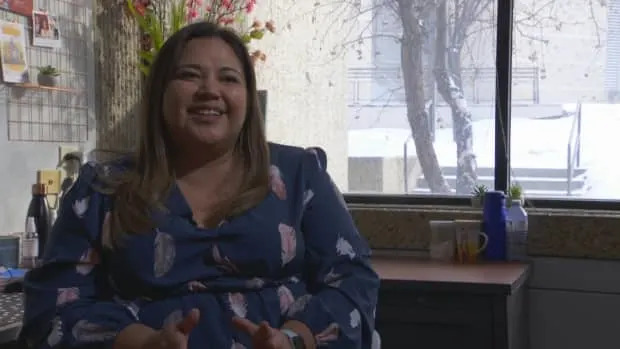
Ty Ferguson/CBC
Koren Lightning-Earle, Caines' mentor at the University of Alberta's Wahkohtowin Law and Governance Lodge in Edmonton, who is from Samson Cree Nation, said she was one of several who cried when Caines made her announcement.
As a former president of Indigenous Bar Association, Lightning-Earle has long advocated for better representation at the country's highest court. She called the moment she heard about Caines' opportunity "one of the highlights of my career."
"This system was never for us," Lightning-Earle said.
"It was always built against us and we were never allowed to be part of this. We weren't even allowed to be lawyers."
Caines gettting to work for O'Bonsawin is "a turning point for Canada," she saidd.
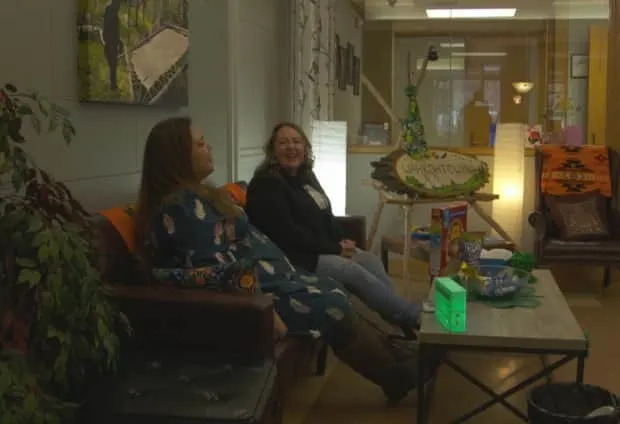
Ty Ferguson/CBC
It was a moment years in the making, going back to when Caines's eldest daughter was diagnosed with autism and Caines chose to become an advocate.
"And when I did that, I realized the intersectionality of so many other ways that law affects people," she said.
"And I was like, I need to be part of fixing that. So getting myself at that table meant that I had to go to law school."
Caines calls the opportunity to clerk for a Supreme Court judge "almost unimaginable." She was the first person in her family to attend university, but she gets even more emotional when she remembers the obstacles Indigenous women have encountered throughout Canadian history.
"My grandmother wasn't even able to vote 60 years ago, and now here I am, two generations later, clerking for an Indigenous justice at the Supreme Court."
She credits support from her family and the team at Wahkohtowin for helping her succeed.
Aunties step up
Lightning-Earle said staff work to create a community that can replace the ones students leave behind, whether that means a snack, smudging or even child care.
Lightning-Earle and others hosted "Aunties night" for Caines' two daughters, ages 9 and 3, some evenings when Caines had a class and her husband was away for work.

Submitted by Casey Caines
Lightning-Earle describes those nights of painting, baking and playing hide and seek as "complete chaos" but said it's just part of supporting students.
"When our students come from communities, they don't come from one house with two parents … They come from communities that love them, that hold them up, that fill rooms with them."
Caines said she's grateful for the support.
"I wouldn't have been able to make it, not even to class, but … I don't think I would have made it through law school."
Caines will spend the next year articling at Wahkohtowin Law and Governance Lodge and clerking at the Alberta Court of Appeal before she and her family leave for Ottawa in August 2024.
Biden's big, bold green spend sends shockwaves around the world, including Canada
Wed, March 8, 2023
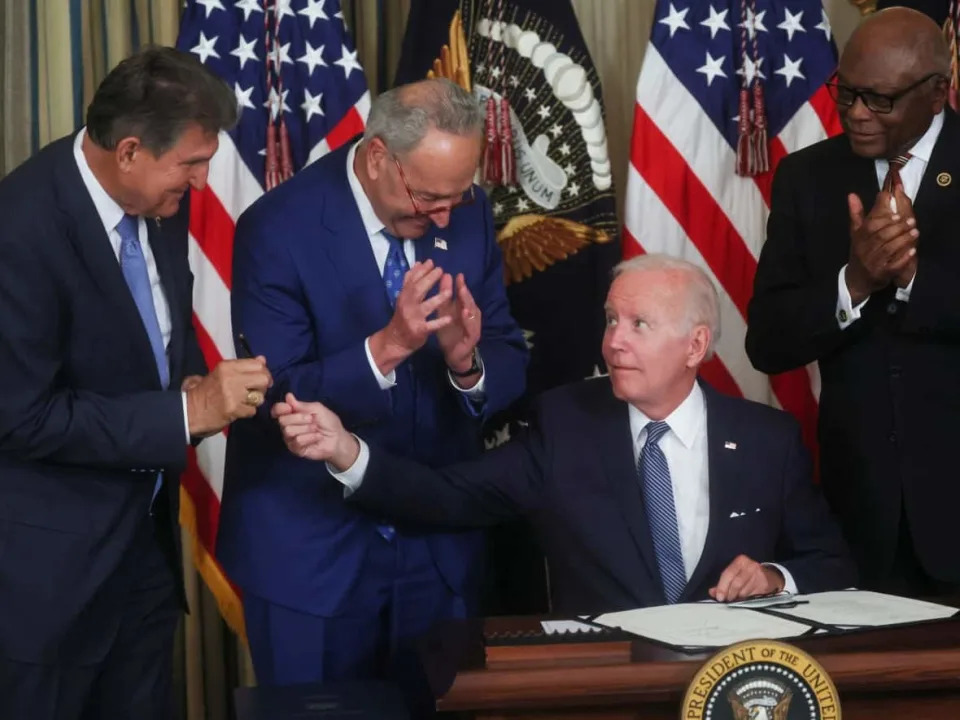
U.S. President Joe Biden signs the Inflation Reduction Act in August 2022. (Leah Millis/Reuters - image credit)
U.S. President Joe Biden's climate bill is only six months old, but its impact on the energy industry around the world continues to grow as pressure mounts on countries to offer similar subsidies toward green energy or risk losing out on valuable investment dollars.
The Inflation Reduction Act (IRA) is a multi-billion-dollar program that pledges government dollars toward developing low-carbon energy. The policy is aimed at boosting the country's manufacturing sector and takes aim at China's dominant position in the clean energy technology supply chain.
The legislation is regarded as the most ambitious climate bill ever passed in the U.S. Still, the IRA could force governments around the world, including Canada, to introduce their own sweeping series of subsidies and have a much larger impact on climate change.
It's a big wake-up call for world leaders, said Marcel van Poecke, head of Carlyle International Energy Partners, a global investment firm based in Washington, D.C.
"That is going to be very, very powerful, and in Europe, people are shocked, but I think it's exactly what we need," he said while on stage at CERAWeek, an energy conference in Houston.
There are many facets of the IRA, such as tax incentives aimed at increasing the manufacturing of wind turbines, solar panels, and electric vehicle batteries. There are also subsidies to promote the development of hydrogen, biofuels and carbon capture and storage facilities. The financial supports are estimated to total nearly $60 billion US ($82.5 billion Cdn) over the next 10 years.
"The IRA will have the effect of really attracting capital back to the U.S. for the reasons and the results that it sort of needs," Tengku Muhammad Taufik, CEO of Petronas, told the CERAWeek audience.
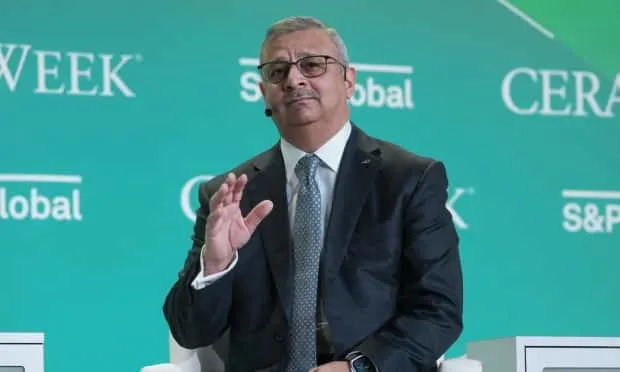
CERAWeek by S&P Global
The IRA is a policy that is easy to understand and offers clear incentives for industry, compared to a more complex system in Europe, said Sanjiv Lamba, the chief executive of Linde, a European industrial gas company.
"There's no denying the fact that suddenly people have woken up with the IRA and said 'Hey, we can do a lot more,'" said Lamba, who doesn't think the European Union will be able to match the level of subsidies.
Carrot vs. stick
Canada has offered subsidies to promote low-carbon sources of energy, although its main policy to promote the decarbonization of the energy sector is the carbon tax. Putting a price on pollution is described by some experts as using a stick to motivate industry, while the IRA is like dangling a carrot.
"You can really feel that the rest of the world is looking at the Inflation Reduction Act and saying, 'How are we going to participate?' and that will help change the pace and accelerate transition," said Lance Uggla, the chief executive of BeyondNetZero, a climate-focused private equity fund. Uggla is a former bank executive with TD and CIBC.

Kyle Bakx/CBC
In Canada, oilsands companies are pressuring the federal government to increase the level of financial support for building and operating carbon capture and storage facilities. Ottawa has already introduced a tax credit, although the government has admitted the policy is not as robust as the IRA.
Oilsands executives have formed a group called Pathways to Net Zero to work together cutting emissions. It's also seeking provincial government subsidies in Alberta.
Cenovus Energy chief executive Alex Pourbaix spoke with CBC News in Houston about subsidies for a proposed carbon capture project in northern Alberta, saying it will need support from both levels of government to move ahead.
"People just need to be very thoughtful about what failure would mean," he said. "What we need is a little bit of help on the order of what we're seeing in the U.S. with the IRA, and I would be very, very surprised if people didn't see the value."
Canadian response
The next federal budget could include a commitment of more cash aimed at cutting greenhouse gas emissions and promoting low-carbon sources of energy.
In October, the government hinted at further action to boost subsidies as part of its fall economic statement, which said, "Canada will need to do even more to secure our competitive advantage and continue creating opportunities for Canadian workers. This challenge has become even more pressing with the United States' recent passage of the Inflation Reduction Act."
The oilpatch earned record profits in 2022 as commodity prices spiked following Russia's invasion of Ukraine. The industry has faced criticism for not using those profits to move quickly enough to respond to climate change.
Some industry executives in the U.S. have questioned the effectiveness of the IRA because of the permitting process in the country, which they say takes much too long. The climate law has plenty of potential, but it could stumble without improvements to speed up the permit system for energy projects.
It is "procedurally impossible" for the country to transition to cleaner and more sustainable forms of energy, said ConocoPhillips chief executive Ryan Lance, even if the IRA makes those types of projects more economical.
Safety agency opens probe of Norfolk Southern rail accidents
Tue, March 7, 2023
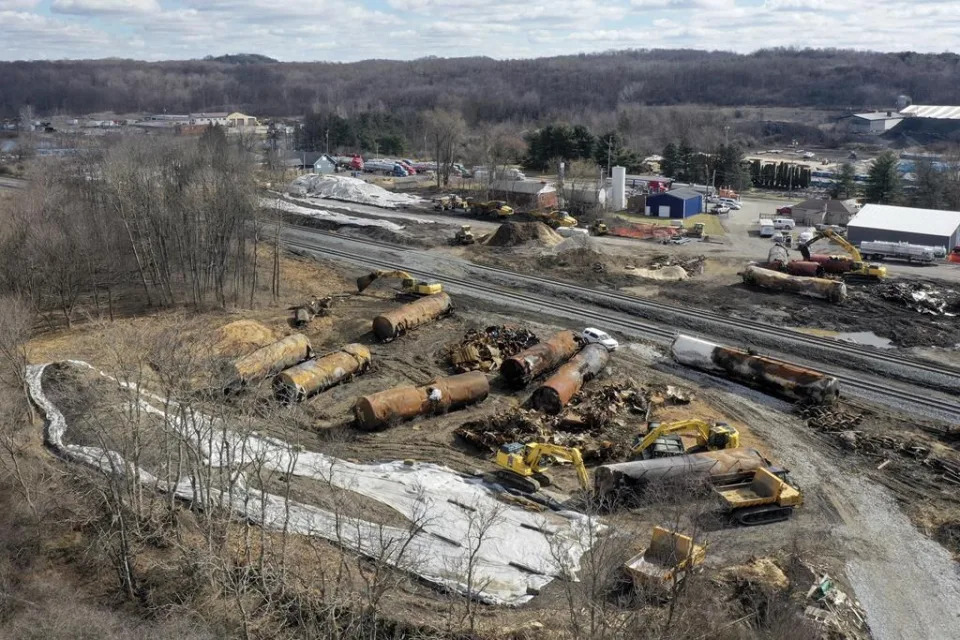
OMAHA, Neb. (AP) — Federal investigators are opening a wide-ranging investigation into one of the nation’s biggest railroads following a fiery derailment on the Ohio-Pennsylvania border last month and several other accidents involving Norfolk Southern, including the death of a train conductor Tuesday.
The National Transportation Safety Board said on Tuesday it will begin a broad look at the company's safety culture — the first such investigation within the rail industry since 2014. The board said it has sent investigation teams to look into five significant accidents involving Norfolk Southern since December 2021.
The agency also urged the company to take immediate action to review and assess its safety practices.
The Federal Railroad Administration also announced its own investigation of Norfolk Southern on Tuesday. The administration will issue a public report after conducting a 60-day safety assessment, according to a release from the U.S. Department of Transportation.
In the release, the railroad administration said Norfolk Southern must go beyond the steps it announced Monday and take actions “that match the severity of recent incidents.”
Norfolk Southern CEO Alan Shaw pledged to hold a series of companywide safety meetings Wednesday — one day ahead of when he is scheduled to testify in Congress at a hearing on the East Palestine, Ohio, derailment.
“Moving forward, we are going to rebuild our safety culture from the ground up,” he said in a statement. “We are going to invest more in safety. This is not who we are, it is not acceptable, and it will not continue.”
In response to the Ohio derailment, the railroad on Monday announced plans to improve the use of detectors placed along railroad tracks to spot overheating bearings and other problems.
Investigators with the National Transportation Safety Board said the crew operating the train that derailed Feb. 3 outside East Palestine, Ohio, got a warning from such a detector but couldn’t stop the train before more than three dozen cars came off the tracks and caught fire.
Half of the town of about 5,000 people had to evacuate for days when responders intentionally burned toxic chemicals in some of the derailed cars to prevent an uncontrolled explosion, leaving residents with lingering health concerns. Government officials say tests haven’t found dangerous levels of chemicals in the air or water in the area.
Within the industry, Norfolk Southern has had a strong reputation for being a safe railroad over the years, said Christopher Barkan, director of the Rail Transportation and Engineering Center at the University of Illinois.
Federal Railroad Administration statistics show accidents involving Norfolk Southern is down since 2019, but the rate of accidents is up over the past decade. The 119 derailments involving Norfolk Southern last year was the lowest number in the last decade. Industrywide, there were more than 1,000 derailments last year.
But pressure has been mounting on the railroad in the aftermath of the East Palestine disaster.
Transportation Secretary Pete Buttigieg told the nation’s freight railroads in February to immediately act to improve safety while regulators were focusing on strengthening safety rules. Buttigieg said the department will hold the railroad accountable for any safety violations that contributed to the Feb. 3 crash.
President Joe Biden said on Twitter after the derailment that the past pattern of railroads resisting safety regulations must change and that Congress should support the effort to improve safety.
Even though government data shows that derailments have declined in recent years, there were still 1,049 of them last year.
While most don’t cause any major problems, of the five accidents the National Transportation Safety Board pointed to involving Norfolk Southern since the end of 2021, three resulted in the deaths of three workers.
On Saturday, no one was hurt when a Norfolk Southern freight train derailed near Springfield, Ohio.
In the latest incident Tuesday, a train and a dump truck collided at a steel plant in Cleveland, killing the train conductor who was standing on the outside of a car, authorities said. The company said the cause of that accident was not yet known.
Eddie Hall, president of the Brotherhood of Locomotive Engineers and Trainmen union that represents the worker who was killed, said the death is a reminder of the need for safety improvements.
“All railroad accidents are avoidable,” Hall said. “This collision underscores the need for significant improvements in rail safety for both workers and the public.”
___
Seewer reported from Toledo, Ohio.
Josh Funk And John Seewer, The Associated Press
No, a BC Company Can’t Sell You Cocaine Now
Tue, March 7, 2023
British Columbians who tuned into the news last Thursday might have gone to bed that night thinking they could soon be buying cocaine as easily as they can purchase a beer.
In question period at the legislature Thursday morning the BC Liberals grilled the government about Langley-based cannabis company Adastra Holdings’ Feb. 22 announcement had been granted federal permission to “legally possess, produce, sell and distribute” cocaine.
At the time, the publicly traded company said it wished to position itself to align with ongoing harm reduction efforts and to “meet the demand for a safe supply of cocaine.”
“Cocaine isn’t prescribed, it isn’t safe, and this is wrong,” said leader of the Opposition Kevin Falcon in the legislature. “Commercializing cocaine as a business opportunity amounts to legalizing cocaine trafficking, full stop.”
He blamed B.C.’s decriminalization pilot program for the announcement, despite the fact it does not legalize the sale or manufacturing of any drug.
“The NDP’s plunge headlong into decriminalization without the proper guardrails that even the federal government insisted should be in place is absolutely not something that we’re going to support on this side of the house,” said Falcon, who previously supported the decriminalization pilot.
The opposition and some experts have characterized safe supply, a harm reduction measure an expert panel convened by the chief coroner has repeatedly called for, as a “public supply of addictive drugs.”
Some media outlets had already reported Adastra’s announcement earlier Thursday morning. Following the exchange in question period, the news cycle spiralled.
In response to a question from Global News at St. Paul’s Hospital Thursday afternoon, Premier David Eby said he was “astonished” the province hadn’t been aware of Health Canada’s decision to grant Adastra an exemption to handle cocaine.
Eby said a prescribed safe supply of cocaine, which some public health experts and drug user rights advocates have called for, “is not part of our provincial plan” to address the toxic drug crisis.
The attention appeared good for Adastra’s business. The company’s stock price rose sharply from 75 cents Thursday morning to $1.60 by 10:30 a.m. Friday, its highest since October 2020.
But by the time many people were taking their Friday afternoon coffee breaks, the concern from both parties was revealed to be largely unfounded.
And public health experts and advocates say in their outrage, both leaders ignored that a safe supply of cocaine would save lives in B.C.’s toxic drug crisis that has killed more than 11,000 since 2016.
What Adastra’s license allows
Adastra had received an amended dealer’s license through a Section 56 exemption from the federal Controlled Drugs and Substances Act granted by Health Canada, according to its Feb. 22 statement.
That exemption is the same mechanism that allowed North America’s first supervised consumption site, Insite, to open in Vancouver and for B.C. to decriminalize small amounts of some drugs for personal use in January.
Adastra’s amended license allows the company to produce up to 250 grams of cocaine per year and import coca leaves to synthesize the substance. It is also allowed to handle up to 1,000 grams of hallucinogenic psilocybin annually.
Cocaine has some legal uses including as a topical local anesthetic and to prevent excess bleeding in some nose and throat surgeries in B.C. and Canada, as authorized by Health Canada.
Selling, manufacturing or trafficking cocaine or other illicit drugs remains illegal under B.C.’s decriminalization pilot plan.
But Adastra’s license does not permit it to sell or distribute cocaine to the general public, Health Canada clarified in a statement late Thursday evening. It can only deal with other licensed facilities, hospitals, pharmacists and research teams with their own exemptions that include cocaine, a fact the agency reminded Adastra of Friday morning.
Neither Adastra or the Liberals had mentioned that key piece of information, until Adastra retracted part of its previous statement on Friday afternoon.
“The Dealer’s Licence issued to Adastra Labs does not permit Adastra Labs to sell coca leaf, psilocybin or cocaine to the general public,” it said.
Opposition critic for mental health and addictions Elenore Sturko placed the blame for the misleading information she and Falcon shared in the legislature on Adastra.
The new information “doesn’t really change those questions that I have,” Sturko told The Tyee.
“Companies are clearly starting to pivot and are indicating they want to profit off of harm reduction and decriminalization,” she said. “We shouldn’t be getting information about harm reduction from companies themselves, it should come from government.”
The Tyee reached out to the premier’s office but did not hear back by publication time. Multiple interview requests to Adastra CEO Michael Forbes were not returned.
Health Canada said it fulfilled its obligations to consult on Adastra’s exemption, which is separate from the decriminalization exemption granted to B.C.
“Health Canada thoroughly reviews licence applications to ensure that all the appropriate policies and procedures are in place to maintain public health and public safety,” read an emailed statement from a spokesman Friday afternoon.
“If the strict requirements are not being followed, Health Canada will not hesitate to take action, which may include revoking the licence.”
Health Canada did not answer Tyee questions about how many companies or facilities in Canada can legally produce or sell the cocaine, but noted Gulf Islands-based Sunshine Labs is permitted to produce and sell small amounts of cocaine, MDMA and prescription heroin to other licensed facilities as of early January.
Amid the confusion, that company’s Thursday corporate update was also partially retracted and clarified on Friday afternoon.
‘A total gotcha’
While questions of corporate profit and transparency are important, drug policy advisor for the City of Vancouver Karen Ward said the BC Liberals’ failure to verify whether this would impact the general public rang as disingenuous.
“It was a total gotcha,” she told The Tyee in an interview, noting the confusion benefited Adastra’s bottom-line as well.
But she said the NDP’s response meant both parties missed a chance to acknowledge new approaches are needed given that hundreds of people have died from contaminated cocaine in B.C.
“They were like, ‘Oh we’re not talking about legalizing cocaine!’ Well, why not?” said Ward. “The reaction really showed their prohibitionist framing of mind on everything.”
B.C.’s prescribed safer supply project and some federally funded pilot projects have largely focused on replacing or offering alternatives to opioids like heroin and fentanyl for fewer than 16,000 people since 2020.
But a safe supply of cocaine is needed, said Ward and Dr. Paxton Bach. About five per cent of cocaine samples in Vancouver are contaminated with fentanyl, according to drug testing data from the BC Centre for Disease Control.
“I quite regularly see overdoses from people at St. Paul’s who thought they were taking cocaine,” said Bach, co-medical director of the BC Centre on Substance Use. “If we truly want to talk about providing predictable, regulated supply of substances to separate people from the current volatile supply, we need to expand it beyond opioids.”
Cocaine, which falls into the stimulant class of drugs, is highly addictive and long-term use can cause serious harms to health, according to the Canadian Centre on Substance Use and Addiction.
Harm reduction experts argue providing a predictable, regulated safe supply of drugs will save lives by separating people from the contaminated and volatile criminalized supply. In studies of B.C.’s smaller prescribed heroin programs, that predictability helped participants stabilize their housing, employment, commit fewer survival crimes and improve their overall health.
Adastra’s licensing offers a strong domestic supply option should the province move forward with a safe supply of cocaine in the future, Ward said. Federal rules have hampered domestic efforts to expand prescription heroin programs in the Lower Mainland, for example, beyond what can currently be imported from Switzerland.
Sturko acknowledged the political theatre of question period doesn’t always lend itself well to delicate discussions. “We’re not wanting to create an atmosphere of panic, but it’s important that we continue to press the government for clarity.”
But Bach said elected officials and media need to be specific to avoid stoking stigma or fear when speaking about issues of substance use, drug poisonings and decriminalization.
Safe supply and decriminalization are connected but not the same, as decriminalization is about reducing the harms of prohibition, not directly addressing the contaminated drug supply.
“Everyone is being touched by these issues, so any information that comes out in this area elicits a strong response,” said Bach. “Stories like these remind us why clarity and specificity are so important in our discussions right now.”
Ward said the fuss was a missed opportunity to discuss what a domestic safe supply of cocaine could mean for people at risk of drug poisoning.
“It’s just so degrading to voters,” said Ward. “Just have that adult conversation about our drug policies and what they’ve done, instead of being as reactive as we are being."
Moira Wyton, Local Journalism Initiative Reporter, The Tyee
Fraser Valley buses to be parked for 3 days over labour dispute
Tue, March 7, 2023
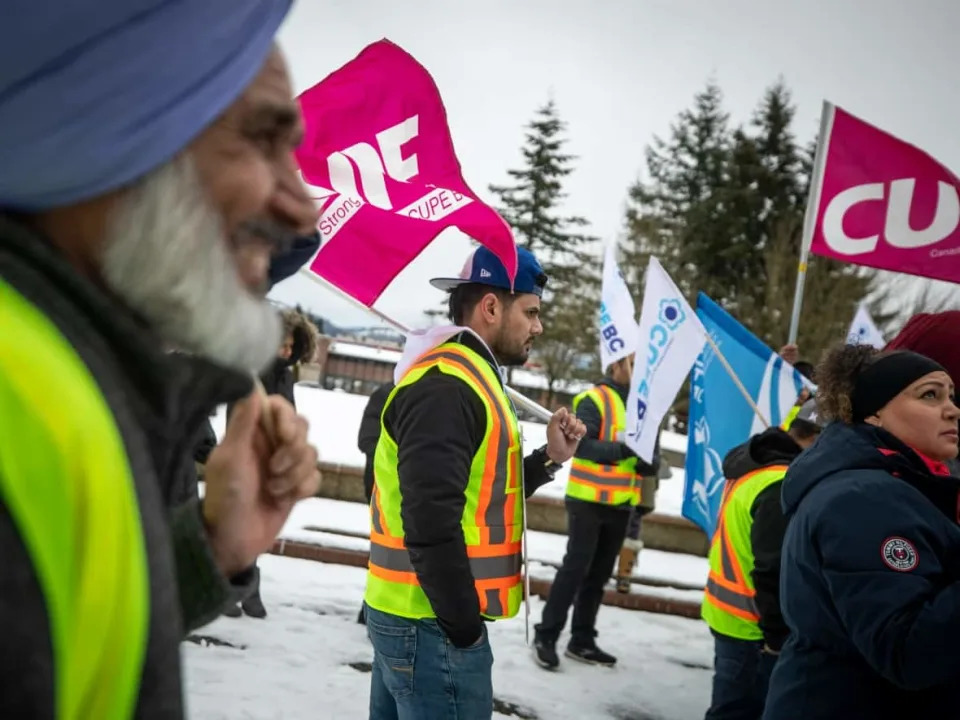
Fraser Valley transit workers will leave their vehicles idle for three days this week as they continue to fight for a new labour agreement. (Ben Nelms/CBC - image credit)
B.C. Transit says Fraser Valley bus service will be suspended from Thursday to Saturday as a labour dispute drags on.
In a statement, B.C. Transit said buses in Abbotsford, Agassiz-Harrison, Chilliwack, Hope and Mission will remain parked for the three days.
The Fraser Valley Express from Abbotsford to Lougheed Station will not run either.
B.C. Transit's contractor, First Transit, runs the buses in the Fraser Valley on behalf of the Crown agency. First Transit is embroiled in a labour dispute with CUPE Local 561, which represents bus drivers and other workers.
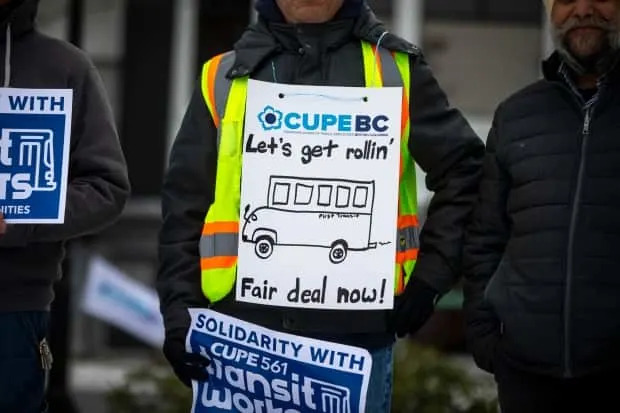
Ben Nelms/CBC
"B.C. Transit is closely monitoring the situation and sincerely apologizes to customers for the inconvenience caused by this matter," the agency said in a statement.
"We understand the frustration felt by customers, and that the job action is difficult for everyone involved in the region."
HandyDART service will not be impacted, B.C. Transit added.
The service suspension will be the second in three weeks as drivers and other workers seek better pay, working conditions and benefits.
Talks next week
Abbotsford bus driver Elizabeth Roux explained the three main issues in the strike.
For the first, which is compensation, she says Fraser Valley drivers are making 32 per cent less than drivers in neighbouring communities
The second issues is working conditions. Roux says some drivers are working 14 or 15-hour days, while the union has also said many work long hours of standby time for which they receive less than $3 per hour.
The final issue is to have workers offered pensions.
"I've been here 12 years and I'd like to stay another 20," Roux said. "But when all is said and done, I'm not going to retire with anything if something doesn't change."
Roux said she and her co-workers have never had to suspend service over a contract fight before but says there is optimism after three years without one, a new deal could be reached soon.
She says the plan is for talks to resume next week. If those fail, however, a full walk-out will commence again on March 20.
The union has 213 members, including drivers, utility workers, bus washers and mechanics.
First Transit, in a statement received after the story was first published, called the work stoppage "unfortunate." It said it is committed to the collective bargaining process and lines of communication remain open.
"First Transit presented CUPE Local 561 with an offer that would see significant wage increases on par with trends across the province, as well as structural improvements to enhance reliability of service," the statement read.
"First Transit feels strongly that its offer balances the needs of all stakeholders in the Fraser Valley's transit system with our desire to ensure we are able to continue to attract and retain skilled and talented workers."
B.C. Transit says the Central Fraser Valley and Chilliwack transit systems see roughly 13,000 boardings every weekday, not including HandyDART or Hope and Agassiz-Mission ridership.
First Nations chiefs criticize Alberta premier's oilsands tailings spill comments
Wed, March 8, 2023
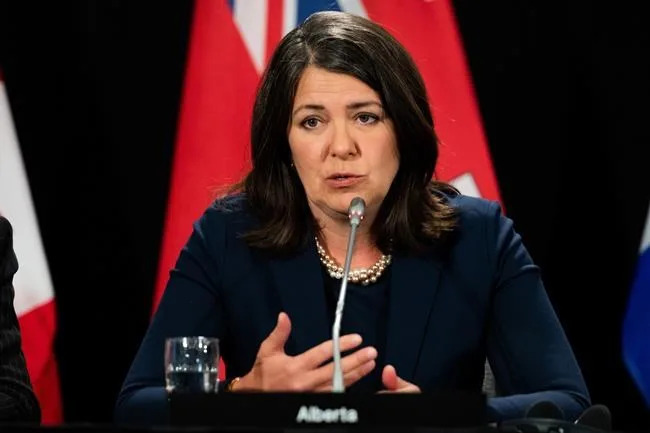
First Nations leaders say Alberta Premier Danielle Smith is minimizing the effect of two releases of oilsands tailings water near lands they harvest from.
Chief Billy-Joe Tuccaro of the Mikisew Cree First Nation says Smith's statement that none of the tailings from an Imperial Oil mine entered local waterways is, at best, premature.
Chief Allan Adam of the Athabasca Chipewyan First Nation says the spill is much more than the failure of communications that Smith has suggested.
Adam says Smith is trying to minimize a spill that sent 5.3 million litres of industrial wastewater into the environment, in addition to tailings seepage that has gone on for nine months and still continues.
Earlier this week, Smith blamed Imperial for being slow to release information about the spills from the Kearl mine, saying that resulted in the spread of misinformation.
Tuccaro calls her comments "very concerning," saying Mikisew monitors are now on the site and that trust has been broken between his First Nation, Imperial and the Alberta Energy Regulator.
This report by The Canadian Press was first published March 8, 2023.
The Canadian Press
ALBERTA
Unpaid oilpatch taxes rise again despite industry boom, say rural municipalities
Wed, March 8, 2023

EDMONTON — Unpaid municipal taxes from the Alberta oilpatch keep rising despite the industry's boom, the province's rural communities say.
"This is the worst ever," said Paul McLauchlin, president of Rural Municipalities of Alberta, which released the data Tuesday. "We've got a serious problem."
The group says energy companies now owe municipal districts in which they operate a total of $268 million. That's up more than six per cent from last year and up 261 per cent since 2018, when the association began keeping track.
As well, the rate of nonpayment is increasing.
McLauchlin said there was $53 million left unpaid in 2022 and $38 million in 2021.
The growing tax debt is occurring at a time of record profits in the industry. McLauchlin said nearly half the unpaid taxes are due from operating companies.
"You've got the highest commodity prices in a generation, free cash flow like no one's ever seen. You think that people would pay their bills."
It's the third year the municipalities have released a tally of unpaid taxes.
Previously, the province’s United Conservative Party government told the Alberta Energy Regulator that it "may" use factors such as tax arrears in ruling on whether to allow transfers of energy assets. Municipalities can submit statements of concern on applications for licence transfers if the companies involved have unpaid taxes.
Municipalities can also attach liens to property if taxes go unpaid.
McLauchlin said that's no longer enough.
"I don't think you can use kid gloves to deal with this. I don't think 'nudge, nudge, please pay' is working," he said. "You need to use regulation and you need to use enforcement."
Municipal Affairs Minister Rebecca Schulz said the province is aware of the survey results and agrees with the Rural Municipalities of Alberta that the problem of unpaid oil and gas taxes to rural municipalities is unacceptable.
She said the government is consulting with industry, municipalities, and landowners to explore options to ensure taxes are paid as a condition of license transfer.
"The vast majority of companies operating in Alberta’s energy sector pay their local property taxes but some have not, leaving municipalities with hard decisions about raising taxes for other taxpayers or cutting services," Schulz said in a release Tuesday night.
"We will be in contact directly with delinquent companies, reminding them of their tax responsibilities."
Jay Averill, spokesman for the Canadian Association of Petroleum Producers, said the industry knows it needs to pay its taxes.
"The revenues generated from industry to municipalities play a significant role in maintaining quality of life for rural communities," he said in a statement.
"(The association) also acknowledges that we continue to see the lagging effects of a multi-year downturn for the oil and gas sector. We are committed to continuing to work with the province's liability management system."
The Alberta Energy Regulator said in an email Tuesday night that it does not have jurisdiction to enforce payment of these taxes.
"Municipalities are responsible for collecting and enforcing unpaid municipal taxes."
Last March, when the municipalities released their 2021 total, a spokesman for Alberta Energy Regulator said the agency is working with municipalities and the province to find solutions but can only implement government policy.
But McLauchlin calls the regulator "complicit" in the problem. He said many of the remaining tax deadbeats, most of which are not members of industry associations, are companies so marginal the regulator is afraid to crack down on them and force them to close their doors before they've cleaned up their wells.
Those wells would then go to the Orphan Well Association, which already has a backlog of unremediated wells that has forced the Alberta and federal governments to bail it out.
McLauchlin said the tax tally and the growing environmental liability of unreclaimed wells on the Alberta landscape are linked.
"(The regulator) uses surface payments and property tax to prop up companies that shouldn't be operating," McLauchlin said. "That's why they're not enforcing it.
"If they were, (the companies) wouldn't meet their environmental responsibilities and these companies would go into some level of receivership."
In 2020, the federal government provided $1 billion for well cleanup in Alberta. The province also requires operators to remediate a certain percentage of their wells every year and has introduced programs that allow the industry to concentrate their cleanup efforts in one area to improve efficiency and reduce cost.
But environmental liabilities continue to grow. Alberta needs to figure something out, McLauchlin said.
"What are we doing here? What's our plan?"
This report by The Canadian Press was first published March 7, 2023.
— Follow Bob Weber on Twitter at @row1960
Bob Weber, The Canadian Press












